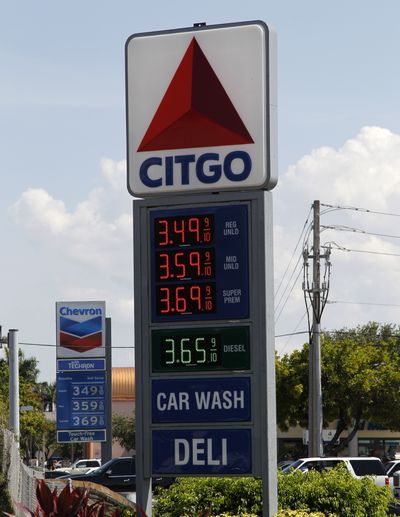Fed likely will act to stimulate economy
Board’s primary consideration is to boost ailing job market

WASHINGTON – The U.S. job market is flagging, and consumer prices are barely rising. The picture sketched by data released Thursday has made some economists predict the Federal Reserve will announce some new step next week to boost the economy.
Applications for unemployment benefits rose last week, pointing to a fourth straight month of sluggish hiring in June. And consumer prices were pulled down in May by a decrease in gas prices.
Weak job growth raises pressure on the Fed because part of its mission is to boost employment. And mild inflation gives policymakers more leeway to act. If inflation were threatening to accelerate, Fed policymakers might feel compelled to raise interest rates.
Fed officials are “likely to go into that meeting feeling a little chastened and looking for a way to support the economy,” said Jeremy Lawson, an economist at BNP Paribas.
Expectations that the Fed will take some action sent stocks soaring Thursday. And stocks surged higher in the final hour of trading after a report said major central banks were prepared to pump money into global financial markets if necessary.
The Dow Jones industrial average jumped 155 points to end the day at 12,652, a gain of 1.2 percent. Broader indexes also ended the day higher.
The Fed’s policymaking committee meets on Tuesday and Wednesday. Economists say the Fed is likely to extend a current program during the meeting that swaps short-term Treasury securities for bonds with longer maturities. The program expires at the end of the month.
Known as Operation Twist, the goal is to further lower long-term interest rates to encourage borrowing and spending.
Diane Swonk, chief economist at Mesirow Financial, said allowing the program to end could result in tighter credit and make it harder for Americans to buy or refinance homes.
The reason: a key part of the program is buying new mortgage-backed securities with the proceeds from those that mature. Without those purchases, banks might issue fewer mortgages.
Earlier this year it seemed less likely that the Fed would extend Operation Twist. Employers created an average of 252,000 jobs a month from December through February. Consumers were growing confident in the economy and spending at the fastest pace in more than a year.
The Fed forecast at its April meeting that the economy would grow by about 2.7 percent this year.
But many economists are now predicting slower growth after seeing the economy slump this spring. Employers added an average of only 96,000 jobs per month in the past three months. Consumers barely increased their spending at retail businesses in May. And European leaders are struggling to contain their financial crisis, which has already plunged much of the region into recession.
“You look at all this and say, where’s the growth going to come from?” Lawson said.
The job market doesn’t appear to be improving.
Weekly unemployment benefit applications increased to a seasonally adjusted 386,000, the Labor Department said. The four-week average, a less volatile measure, rose for the third straight week to 382,000. That’s the highest in six weeks.
Applications are a measure of layoffs. When they drop below 375,000, it typically suggests hiring is strong enough to reduce the unemployment rate.
But applications have settled near or above that level since April. Many economists on Thursday said they don’t expect job growth in June to be much better than April or May.
Swonk said the Fed might take further action later this summer, particularly if Europe’s economy worsens. A deep recession in Europe could weigh on the U.S. stock market and cut into U.S. exports, slowing American growth.
One hopeful sign is that consumers are finally seeing relief from higher gas prices, which could revive spending this summer.
The consumer price index dropped 0.3 percent in May, the Labor Department said in a separate report. It was the largest decline since December 2008 and mainly because of a 6.8 percent drop in gas prices. Food costs were unchanged.